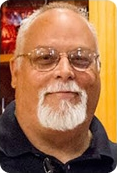Art Holcomb’s
The Moments Method


“One Draft – Three Cuts”
The Truth about Storytelling: You have heard a hundred thousand hours of stories in your life. If you could just get to that part of the brain that heard those stories, loved those stories and used what you’ve heard to tell the stories you already tell in the course of your everyday life, you could access everything you already know about storytelling.
The Stages of Creativity: This really isn’t anything new – No different than what a sculptor, painter, or musician does – we’re all CREATING SOMETHING FROM OUR OWN IMAGINATION.
Start by thinking of yourself differently: By thinking of yourself as an ARTST for a moment (rather than as a WRITER with all the mythology, baggage and problems associated with the term), you see instantly that there is another approach to creating that allows you:
- Incredible Creative FREEDOM ,
- Maximum FOCUS and
- High PRODUCTIVITY!
You are now not confusing the Act of CREATING with the Act of PERFECTING.
The KEY: In order to powerfully creating is to work in STAGES and to allow each stage it’s best chance at succeeding! Focus on the purpose and mission of each stage of the process.
Writer’s Draft – The CREATIVE, ALL-OUT Draft:
This is the first draft, the creative moment – time to have fun, don’t think, just enjoy. The key to this is that there is no delete key, no backspace, no revision at all. Your job here is to write out the story as fast as you can.
It’s time to use the STRING OF PEARLS Approach. Start with either index cards or separate sheets. I like using a classic numerical outline on a particular moment of the story
If stuck, possible suggested moments (points of story tension) to concentrate on:
Beginning:
- The MOMENT before the World changed
- The MOMENT when they meet the Hero
- The MOMENT Something Happens
- The First CONFRONTATION
Middle:
- The MOMENT you first mislead the audience
- Your TRAILER MOMENT
- The MOMENT everything changes direction
- Your MOMENT of Change/Realization
End:
- The MOMENT of REVELATION
- The MOMENT of the DARK NIGHT
- The MOMENT of FINAL CONFRONTATION
- Wrapping it up
- Where we go from here
Now, we’re going to write two scene for each moment: One that comes before the moment and one that comes after – We’ll start with the scene that comes after
The Scene AFTER: You have this Moment, but now it’s over and it’s caused some things to happen. There are ramifications from what just happened for the plot. Your hero has either just had a success, and is ready to move to the next step or
The Scene BEFORE: We now have had out moment and spent some time dealing with the fallout of what’s just happened. We have everything we need to write the scene that lead up to the problem. How did they get there? How can I set the stage for what’s about to happen in this set-up scene?
At this point you should have a collection of three-scene groups. If you’ve fully explored the story idea as best you can, you have 80-90% of the final story in front of you.
Editor’s Cut – put yourself in the Film Editor’s shoes.
The ROLE of the Film Editor is to
- Organize the moments into a story
- Make a list of what WORKS and what DOESN’T
- Fill in the parts that are missing – turn these moments into a STORY
- Make sure that you have SET-UP and PAID-OFF everything!
Structuring the Story:
At this point, you have a collection of Moments. Hopefully you have
written out all the important scenes that you can create for your story.
Time to organize:
You can look at these moments as your high points of the story – those images that you believe are most important. Now it’s time to put them in some kind of order
Feel free to move things around. Remember: You are in complete control of this universe and you know the rules of storytelling. Here pacing is important and that mean paying attention to the natural rhythm of the story itself. Is there an ebb and flow?
Director’s Cut – put yourself in the director’s shoes.
The Director’s Job is to:
- Perfect the story
- Fill in any scenes that are missing
- Trace the PLOT LINE and the EMOTION LINE through the script
- Rewrite/edit as needed
- Perfect your SYTLE and VOICE
- Strengthen and tighten the writing
- Looking for FOCUS and CLARITY here
- Exceptional DETAIL
- Maximum IMPACT
- RICHNESS
Judge each scene/section individually and decide whether to
- Cut it out
- Make it better
- Declare it perfect
Each has a beginning, middle and end and more importantly, each has a mission and a goal
I concentrate here on style and voice:
- Are my characters saying what I want them to say?
- Is the making their point?
- Are your moments shining? Are they iconic and powerful?
Producer’s Cut – Now we have to make it irresistible to a producer.
Your job here is to:
- Tighten and smooth out the read of the script
- Hyper-focus on every scene
- EARN that sale!
But first, we’re going to go back over the script scene-by-scene and look at t the way that a producer would. You need to understand how expensive your movie is and send it to someone who can actually make it.
Is the story compelling? Do you want to keep turning the pages to see what happens? Is it a fast read? The faster the better. Your first reader will tell you where it drags. Last chance to fix any problems.
And finally – just let go! Enjoy your accomplishment.
and then: Start the market phase – and begin work of your next script!